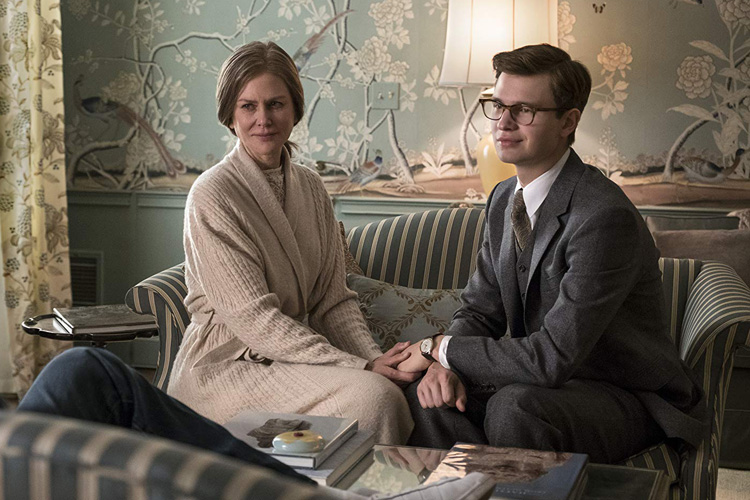You’re a serious person, sitting down to see a serious movie. A movie based on a novel—a Pulitzer Prize-winning novel, no less! You settle in, readying your mind for high art. But that’s when it happens. Suddenly, you’re sucked into another dimension: a dimension of sound, a dimension of sight, a dimension where The Room won Best Picture in 2004. Confused and disorientated, you peer through the darkness to see what movie is playing in this upside-down world — The Goldfinch.
Normally you’d try to escape, but it cost full ticket price to get in, so you might as well sit it out. The Goldfinch wastes no time in telling you what it’s about: 13-year-old Theo Decker is at the Met with his mother when an explosion rocks the museum, destroying irreplaceable paintings and killing an irreplaceable mom. When Theo wakes up in the rubble, he nabs a painting that survived unscathed and wanders onto the streets of New York, looking for something to do for the rest of the movie.
And oh, the places he goes. Every plot piece of The Goldfinch could fill its own film: stolen art, deadbeat dads, a love triangle between characters who’ve barely had any scenes together, secret homoeroticism, financial fraud, crippling Vicodin addictions, international crime rings—there’s a lot going on here. It would take a herculean feat of screenwriting to solve a narrative puzzle this scattered. But remember, you’re trapped in a backwards dimension, so you’re stuck with the writer who adapted The Snowman. You may not have seen that 2017 disaster, but you might be familiar with the memes it spawned.
The Goldfinch, despite its prestige drama pretensions, is equally destined for Internet mockery. It takes itself too seriously to be taken seriously. The dialogue and performance direction are consistently morose, which even extends to characters in their early teens—it’s like a comedy sketch where adult roles are taken by children in oversized suits. It’s just discordant enough to keep you at safe laughing distance.
The whole of The Goldfinch suggests that neither the writer nor the director have a firm grasp on human interaction, which is not a weakness you want when turning book characters into visible people. One scene, in particular, rings this weakness out like an alarm bell: a wealthy family is in the middle of breakfast when the oldest child walks in. He sinks into a chair, stares forward, and loudly exclaims, “WHO DO I HAVE TO BLOW TO GET A CUP OF COFFEE AROUND HERE?” Then his father slams both fists on the table, and then he slams both fists on the table before storming off.
What? After this bizarro world version of a family conflict, you may be inclined to check how the scene goes in the book. I’ll save you the time: it goes differently. The brother says his line with droll sarcasm rather than shouting it with incestuous earnest, and there’s no mirrored-double-fist-pounding. But the movie plays like it’s trying to make everything weird. Some of the actors only compound the problem: Finn Wolfhard shows up with the world’s worst Russian accent and a monosyllabic laugh, Luke Wilson overacts like he’s in a Lifetime drama, and Sarah Paulson seems like she’s trying to be a Kristen Wiig SNL character. No one is on the same page.
With all this clumsy writing, acting, and scoring—the music often signals the tone of the next scene instead of the current one—every scene is a new, fresh hell. If you imagine that it’s an anthology of loosely related self-parodies, it’s at least funny. But The Goldfinch doesn’t even build tension or character: not until the final act does the protagonist make a choice between two established motives. What have we been doing this whole time?? Ignoring Roger Deakins’ cinematography because we’re so distracted by the parade of awfulness, that’s what.
In its final speech, the movie spits out messages that were largely absent up until that point — platitudes like “everything happens for a reason” (not a direct quote) and “maybe sometimes good can come from bad” (a direct quote). The Goldfinch may have been an outlandish mishmash of bad decisions, but its desperately cloying ending is almost kind of cute, in a “dog running into a wall” sort of way. Sometimes it’s easy to fall in love with a silly failure.
★ (1/5)




